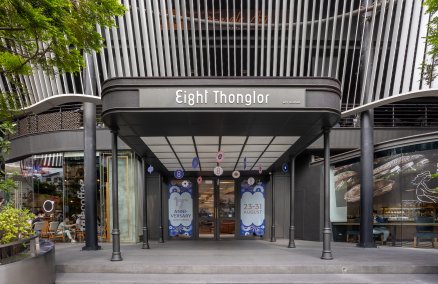Typography is quite niche. What sparked your interest?
As a teenager, I liked to collect old artwork and signage, from the prog’ rock era in the 70s to the early 90s. I particularly loved the logos of Pink Floyd and David Bowie. I found out that typography existed as a major when I was a student at Chula. My professor at the time wasn’t very inspiring, but as I did a lot of writings for posters and signage for the university, I came to realize that Thai fonts are actually incredible. If anything, it seemed like our type designs were so much more developed in the past. People actually put a lot of effort to come up with new artistic ways to send out a message. I felt like fonts could be very powerful communication tools, like inexpensive yet meaningful pictures.
What about typography in Thailand now?
From 1996 onwards, the industry really started to grow. There are so many new styles of writing using the Thai alphabet. We don’t have to be restricted by how these letters are traditionally drawn. We can push the boundaries to the very edge and create something fun, interesting and current, but which still retains the original meaning.
What’s the biggest problem for typographers working with Thai fonts?
Our market is limited to only Thailand. A lot of people are willing to work for foreign clients using English because the market is global. Creating a Thai font is so much more complicated, and so it’s not always easy to find people willing to pay for it.
How important are typography and signage to everyday life?
I think they are a much bigger part of everyday life than you think. For example, if you see a signpost for a temple fair, you’ll pretty much get the picture of what it’s like just because of how the fonts are designed. This applies to all the brands that you see in department stores—each brand has its own character, and part of that has to do with how the fonts are designed.
Do you have any upcoming projects?
I’ve been working on the new signage system for Suan Luang, Rama IX. After looking at TFL [Transport for London], I realized public information in this country could be improved so much.















